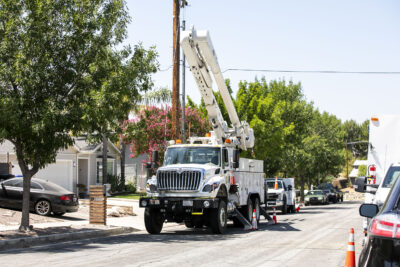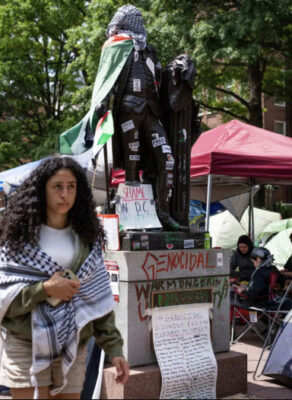By Kristen Hwang
CalMatters Writer
Cynde Soto, a quadriplegic who requires around-the-clock care, has been on Medi-Cal for most of her life. Recently, she came into a modest inheritance, about $8,000, that has helped cover her daily expenses. But it also means that she would lose her state health insurance under a proposal from Gov. Gavin Newsom.
Newsom has proposed restoring a $2,000 limit on an individual’s assets — including savings accounts and property other than a home and a car — and $3,000 for couples to qualify for Medi-Cal. Anyone 65 and older or disabled who exceeds that limit would be ineligible. Newsom also is proposing a cap on how much home care Medi-Cal enrollees like Soto could receive.
In unveiling the proposal, Newsom said that California has a “spending problem” and needs to make difficult choices to address the state’s $12 billion deficit, which he attributed in part to growing Medi-Cal costs. His proposal would save the state $94 million this budget year and more than $500 million the next year, according to the governor’s budget document.
But health advocates say that it’s almost impossible for someone to live with just $2,000 in assets in California. Rent often exceeds that amount, and medical expenses not covered by insurance quickly add up.
Advocates say Newsom’s proposal unfairly targets people with disabilities and the elderly — those who are most likely to need full-time care and have fixed incomes.
“It’s draconian — $2,000 is no safety net for people,” said Kim Selfon, an attorney with Bet Tzedek, a legal services organization in Los Angeles.
For Soto, a Medi-Cal limit on assets would mean she would either lose the caretakers who help her bathe and eat or have to spend all of the money except for $2,000. With the inheritance, Soto said she can afford repairs to her Long Beach condo and buy medical supplies that Medi-Cal doesn’t cover, such as bandages or nutritional drinks to supplement her diet.
“It’s not cheap being disabled,” Soto said. “I’m really scared. I cannot live without my help.”
When asset limits were lifted, Medi-Cal enrollment surged
Some lawmakers and disability advocates have argued against the asset limit for years. They say it forces people into poverty and hasn’t kept up with rising inflation and cost of living.
Newsom agreed to raise the limit to $130,000 per person in 2022. Then in 2024, the limit was erased completely. Now Newsom wants to bring back the original limit of $2,000, an amount that was set in 1989.
This would reinstate complex rules about wealth and property that kept thousands of seniors and disabled people from qualifying for Medi-Cal. Under those rules, an individual’s first home and car are exempt, but other properties count toward the $2,000 limit. The balance of a 401k or retirement account are exempt, although payouts are considered income. Life insurance, cash on hand and savings accounts also count toward the limit. Even certain types of funeral plots count.
The test would apply only to people 65 and older as well as those with disabilities, which creates a financial cliff for those about to turn 65. Medicare, which many seniors use for health insurance, does not cover long-term care and requires some co-pays, so many people use Medi-Cal to supplement their Medicare benefits.
In a recent Assembly hearing, Newsom administration officials said when the limit was eliminated, far more people enrolled in Medi-Cal than anticipated, contributing to the state’s growing costs. Between 112,000 to 115,000 people enrolled compared to early estimates of just 40,000, said health care services director Michelle Baass.
Seniors make up a small portion of all Medi-Cal enrollees, but they’re about twice as expensive as the average enrollee because they use more medical care. The elimination of the asset test last year contributed to most of the senior enrollment growth and cost the state about $500 million more than expected, according to a report by the nonpartisan Legislative Analyst’s Office.
Still, lawmakers during the hearing questioned the prudence of kicking seniors and people with disabilities off of the program and whether it would actually save money in the long run.
Assemblywoman Pilar Schiavo, D-Chatsworth, said these groups would need more expensive care like nursing home stays or homeless services if the asset test were reinstated.
“This is going to lead to more homelessness of seniors and the disabled. That’s what’s going to happen, and that will cost our state money too,” said Schiavo, whose district includes most of the Santa Clarita Valley.
Making it ‘more expensive to age in California‘
Kevin Prindiville, executive director of Justice in Aging, said Newsom’s proposal would “make it more expensive to age in California.”
California’s elimination of the asset test came under fire this month from congressional Republicans, who argued that it allows the “wealthiest Californians” to get free health care. But lawyers with legal aid organizations that help people enroll in Medi-Cal say that’s not happening.
Regardless of their assets, Medi-Cal enrollees still need to meet income limits, which are currently 138% of the federal poverty level, or about $1,800 per month, said Linda Nguy, a lobbyist with the Western Center on Law and Poverty.
“Our clients are not millionaires,” Nguy said. “We’re talking about people with very low incomes who aren’t able to access the health care services that they need.”
Ronald Dallatorre, 58, enrolled in Medi-Cal two months ago. He had been looking forward to getting caretakers to help him at his Compton home so that his wife could take a break.
Dallatorre got sick with COVID-19 in April 2020. He spent four weeks on a ventilator and almost a year in a hospital. Now the former heavy-duty mechanic has Guillan-Barré syndrome, an autoimmune disease that attacks the nervous system, causing muscle weakness and numbness.
Dallatorre uses a wheelchair and can’t move his hands. His wife quit her job with L.A. Unified School District to take care of him full-time. The Dallatorres also own a second home that a close family friend lives in, rent-free. Under the proposed budget, Dallatorre would be ineligible for Medi-Cal because of this property.
If he is kicked off Medi-Cal because of the asset test, Dallatorre said his medical costs would still be covered through his wife’s insurance, but they can’t afford caretakers. His wife would have to continue as his full-time support.
“I worked 40 years of my life never receiving help, always paying taxes. I was glad to do it because I thought maybe when I need it, somebody will be able to help me,” Dallatorre said. “I didn’t know how stupid the system is.”








